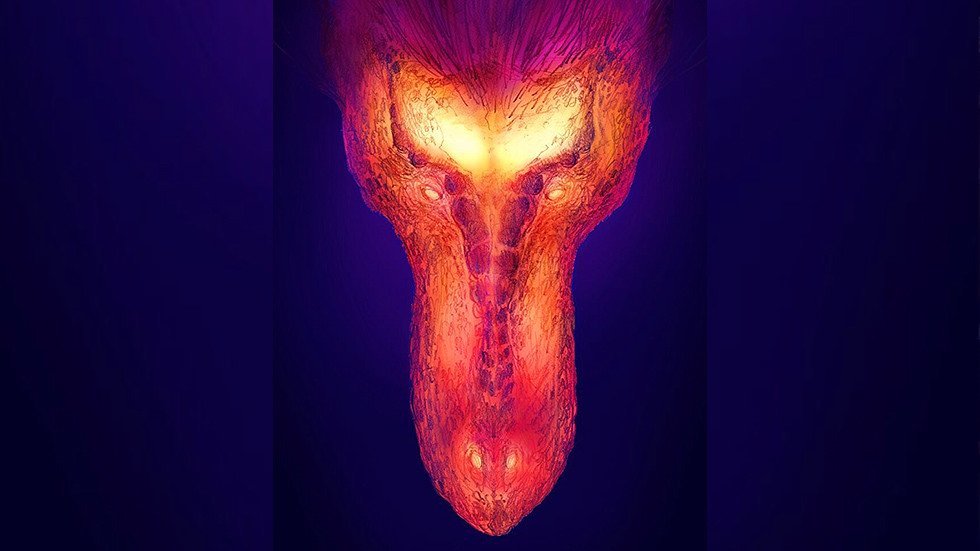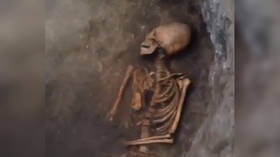Air con before it was cool: Scientists solve mystery of holes in T. rex’s skull

The holes in the skull of the Tyrannosaurus rex, one of the greatest predators to roam the Earth, have puzzled scientists for decades but now researchers think they have finally solved the mystery once and for all.
One previous leading theory was that the holes were involved in the mechanics of the beasts’ powerful jaws, helping it to clamp down and crush whatever sorry creature it had captured. However, evolutionary biologists couldn’t make sense of this as it was just too awkward given the shape of the skull.
“It's really weird for a muscle to come up from the jaw, make a 90-degree turn, and go along the roof of the skull,” said anatomist Casey Holliday of the University of Missouri.
Also on rt.com Greatest race ever? 'World's fastest T-Rex' contest takes place at racetrack in Washington (VIDEO)Scientists from the University of Missouri, Ohio University and the University of Florida combined forces to figure why exactly an apex predator might have had two large holes in its skull.
They decided to study a group of alligators at the St. Augustine Alligator Farm Zoological Park using thermal imaging cameras. Alligators, like the T.rex, are part of a group of animals known as diapsids, which all have these mysterious holes in their heads.

“We noticed when it was cooler and the alligators are trying to warm up, our thermal imaging showed big hot spots in these holes in the roof of their skull, indicating a rise in temperature,” Kent Vliet, coordinator of laboratories at the University of Florida’s Department of Biology, said.
Cold-blooded animals’ body temperature is dependant on the environment, which makes their thermoregulation process vastly different from warm-blooded creatures like mammals.
“Later in the day when it's warmer, the holes appear dark, like they were turned off to keep cool. This is consistent with prior evidence that alligators have a cross-current circulatory system - or an internal thermostat, so to speak,” Vliet added.
Also on rt.com ‘Nessie can’t hide from us all!’ Cryptid-hunters plan to storm Loch Ness, inspired by ‘Area 51 raid’So after decades of a paleontology ‘cold war’ of sorts, it turns out that the T. rex actually had an in-built, natural air conditioner to regulate its body temperature and, presumably, make it a far more effective hunter that could terrorize its prey for far longer. Great.
Despite this latest research, however, we still do not definitively know whether dinosaurs and, more specifically, the T.rex was warm or cold-blooded and this remains a topic of, ahem, hot debate among the scientific community.
Like this story? Share it with a friend!














